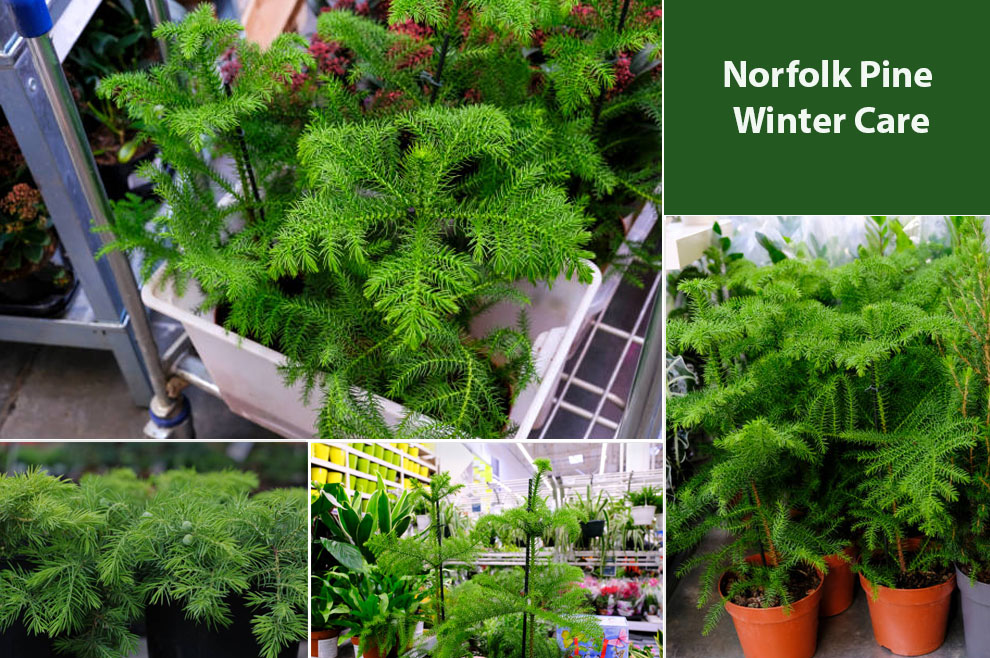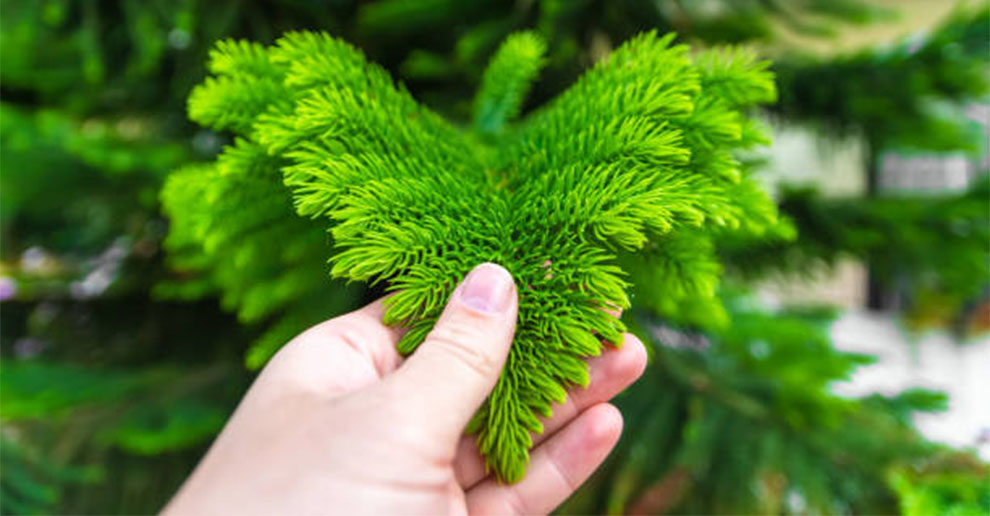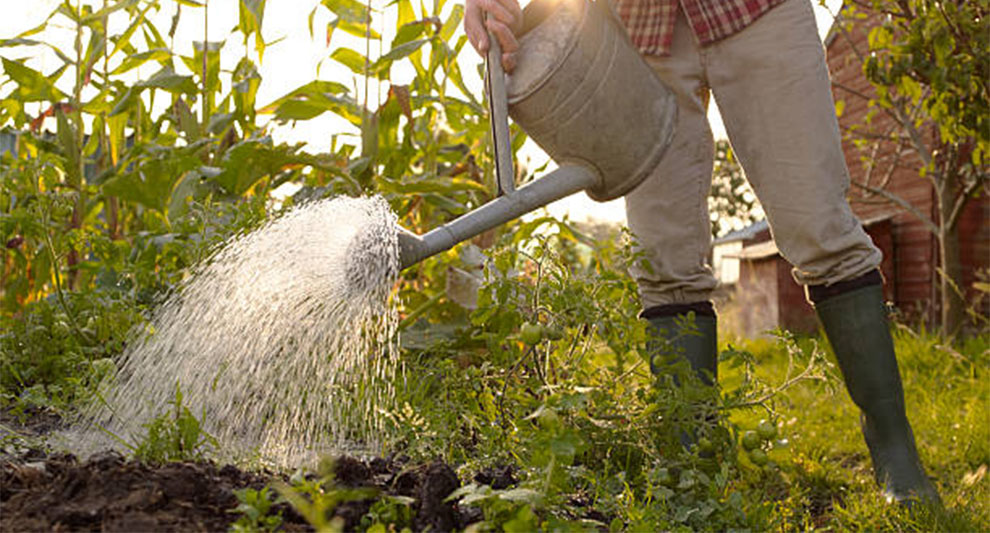Norfolk Pine Winter Care: How to Make Them Survive Winter?
In winter, care for Norfolk Pine by placing it in bright, indirect sunlight, keeping temperatures at 65-75°F (18-24°C), maintaining high humidity, watering carefully to keep the soil moist but not soggy, and shielding it from cold drafts and frost.

Winter’s chill can be harsh, but it doesn’t have to spell doom for your beloved Norfolk Pine (Araucaria heterophylla).
In this comprehensive guide, we will explore the intricacies of Norfolk Pine winter care, offering you a detailed blueprint on how to keep this indoor evergreen thriving through the frosty months.
Ideally, Norfolk Pine tree winter care involves providing bright, indirect sunlight, and maintaining room temperatures of 65-75°F (18-24°C).
You must also look after ensuring adequate humidity, moderating watering to keep the soil moist but not waterlogged, and protecting the plant from drafts and frost.
Understanding these nuances of winter care for Norfolk Pines is a rewarding endeavor for all garden enthusiasts.
Understanding Norfolk Pine
Before we dive into the specifics of winter care, let’s take a moment to appreciate the unique beauty of the Norfolk Pine.
Known as the Christmas Pine, it boasts elegant, symmetrical branches adorned with rich green needles. This charming plant is a holiday favorite, but it requires special attention as the temperatures drop.
Can Norfolk Pines Survive Winter?
Norfolk Pines (Araucaria heterophylla) are native to the South Pacific, primarily found on Norfolk Island, which has a mild and temperate climate.
These evergreen trees have become popular houseplants in many regions, especially during the holiday season when they are often used as decorative Christmas trees.
However, when winter arrives, particularly in regions with cold and frosty weather, there are certain considerations to keep in mind regarding the survival of Norfolk Pines.
Can Norfolk Pines Live Outside In Winter?
Norfolk Pines can live outside in winter, but it depends on the variety and local climate. Indoor Norfolk Pines, adapted to controlled indoor conditions, are not frost-tolerant and should remain indoors in colder regions.
However, outdoor varieties, suited for milder climates, can thrive outdoors year-round where winter temperatures don’t consistently drop below freezing.
In mild regions, outdoor Norfolk Pines flourish with proper care, including protection during occasional cold snaps.
Ultimately, whether they live outdoors in winter hinges on selecting the right variety and providing suitable conditions, while indoor Norfolk Pines should remain inside to avoid cold damage.
How Cold Can A Norfolk Pine Tolerate?
Norfolk Pines can tolerate temperatures down to about 50°F (10°C) but are not frost-tolerant.
Exposure to freezing temperatures (32°F or 0°C and below) can cause cold damage, including browning of needles and potential harm to the plant.
To ensure the health of Norfolk Pines, it’s best to protect them from frost and keep them in a climate where temperatures remain consistently above freezing.
How To Care for A Norfolk Pine In Winter?

To ensure the survival of Norfolk Pines during winter, it’s essential to provide them with the right care. This includes:
A. Norfolk Pine Needs Proper Sunlight in Winter
One of the key elements of caring for Norfolk Pine during winter months is providing the right amount of light. Imagine your Norfolk Pine as a sunbather – it craves bright, indirect sunlight.
Position it near a window with filtered sunlight, and remember to rotate it regularly. This ensures that all sides receive an equal share of sunshine, promoting balanced growth.
B. Temperature and Humidity
Maintaining optimal temperature and humidity levels is paramount for Norfolk Pine’s health during winter. Think of it as creating a cozy winter haven for your plant. Keep the room temperature within the range of 65-75°F (18-24°C).
Avoid placing your Norfolk Pine near drafts or heat sources, as extreme temperature fluctuations can stress it.
When it comes to humidity, Norfolk Pines adore it. Winter air tends to be dry, so it’s essential to supplement moisture.
Place a shallow tray of water near the plant or invest in a humidifier to maintain the right humidity levels. Think of it as providing your Norfolk Pine with a warm, humid hug.
C. Watering Schedule

Winter care for Norfolk Pines involves a careful approach to watering. The goal is to keep the soil consistently moist without overwatering. To achieve this balance, allow the top inch of soil to dry out between watering sessions.
Always use room temperature water to prevent shocking the plant’s delicate root system.
D. Guarding Against Pests
Pest control should be on your radar during Norfolk Pine winter care. Common indoor plant pests like spider mites and mealybugs can strike even during the coldest months.
Being vigilant and learning to identify these intruders is a valuable skill. Combat infestations with a mild insecticidal soap or neem oil.
E. Use of Fertilizers in Winter
While Norfolk Pines require less fertilizer during winter, they still need some nourishment. Think of it as a light snack rather than a hearty meal.
Opt for a balanced, diluted liquid fertilizer every 6-8 weeks. Remember, moderation is key during the colder months.
F. Winter Pruning Norfolk Pines
For those looking to maintain the perfect Norfolk Pine silhouette, pruning and shaping can be an essential part of winter care.
Trim any dead or yellowing branches to promote healthy growth. If you’re aiming for a bushier appearance, gently pinch back the tips of the branches.
G. Air Quality Matters
Don’t overlook the importance of air quality when caring for your Norfolk Pine in winter. Maintaining adequate humidity with a humidifier is crucial.
Additionally, steer clear of placing your plant near heaters or radiators, as these can cause excessive dryness.
Related: Pine Tree Growth Rate
In conclusion, Norfolk Pine Tree winter care may seem intricate, but it’s a manageable task with the right knowledge.
By providing the ideal lighting conditions, regulating temperature and humidity, adhering to a precise watering routine, and addressing potential pest issues, you can ensure your indoor pines not only survives but thrives through the winter.
Happy gardening!
